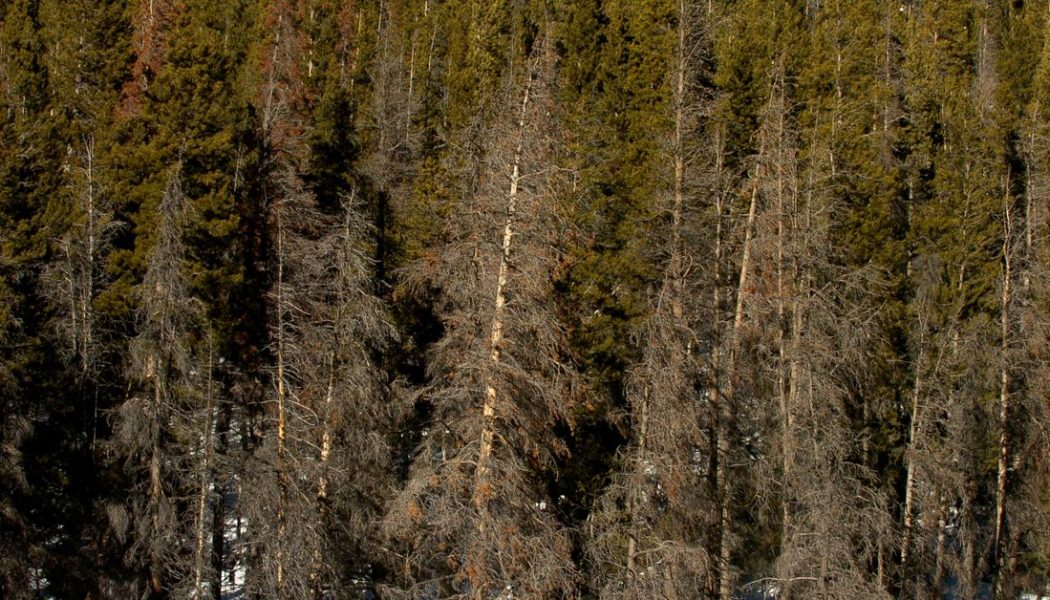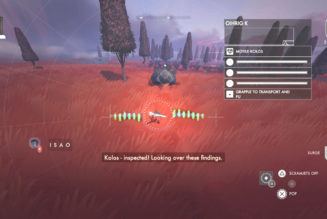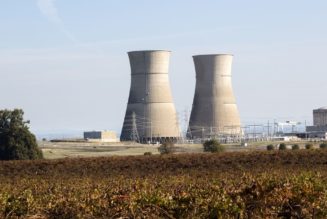
Record-setting wildfires in Colorado are wreaking havoc on forests that have already been devastated by outbreaks of another kind: infestations of beetles that burrow beneath tree bark and eventually kill their hosts.
State officials last week mentioned that the East Troublesome Fire was burning through an abundance of “beetle-killed” pine trees, boosted by dangerous weather conditions. That fire grew to become the second largest fire in Colorado’s history and was only 20 percent contained as of Tuesday. Three of the largest wildfires on record in the state have burned this year, and they’ve preyed on forests hard-hit by beetle infestations.
But researchers warn against blaming the beetles for the unprecedented fire season Colorado is having. There’s growing evidence that beetles play a negligible role in the spread and severity of fires. Our changing climate is likely a bigger culprit behind the destruction of Colorado’s forests. Hotter, drier conditions are fueling wildfires and bark beetle infestations. If the planet continues to heat up unchecked, both problems are expected to get worse.
“Recent [beetle] outbreaks can distract us from the big picture, which is that we should get used to living with fires,” says Dominik Kulakowski, a professor at Clark University who has studied the effects of bark beetles on wildfire behavior. “Large fires are going to keep occurring, and the exact condition of the forest is going to matter less [the more extreme weather and climatic conditions are].”
It’s easy to see why the beetle has become a sort of boogeyman in Colorado and other Western states. Beetles burrow beneath tree bark to lay their larvae, slowly killing the tree as they chew tunnels through it. Winter used to keep beetle populations in check, but milder temperatures have allowed their numbers to boom for decades. “It takes a native insect and makes it behave as if it were invasive,” Mike Lester, the Colorado state forester says.
A drought in Colorado from 2001 to 2002 made things worse in the lodgepole pine forests that the East Troublesome Fire is burning through now. Healthy trees can typically make enough sticky resin to deter the invaders, but trees stressed by drought have a harder time doing this, leaving swaths of weak trees for the beetles to prey on.
In Colorado and other Western states, bark beetles have left behind millions of acres of forest scarred with dead trees. That’s led to concern that all those dead trees make the perfect fuel for megafires. But the relationship between beetles, trees, and fires gets pretty complex.
Lester recalls a joke from a friend: “Forestry isn’t rocket science,” he says. “It’s much more complicated.”
Research over the last five years has made it more clear that crown fires — which race from treetop to treetop — don’t spread as easily between trees that have lost their needles. When beetles attack, they dry out the trees’ needles, turning them red, and eventually causing them to fall. There still isn’t scientific consensus on whether the dried up needles pose a greater fire risk while they’re still attached to the trees. But most experts agree that canopy fires, like the East Troublesome Fire, have a harder time jumping around among trees that have already lost their foliage.
When needles do fall, they become fuel along the forest floor and could ignite into a surface fire. Surface fires tend to be less devastating and easier to control, according to Kulakowski, compared to crown fires. But even if beetle infestations aren’t leading to more intense blazes, they’re still changing the dynamics of wildfires.
As the beetles’ damage redistributes fuel throughout the forest, wildfire behavior in Colorado and other beetle-ridden states is becoming harder to predict. That unpredictability can ultimately make wildfires more challenging to fight. Firefighters might need to deal with more downed trees in stretches of wood that beetles have decimated. And they’ll be forced to switch up strategies based on whether they’re dealing with surface or crown fires.
There is one prediction that experts are already making: whether or not the beetles are making the forest more vulnerable to fires, the fires will make the forest even more vulnerable to bark beetles. “Bark beetles love trees that are moderately scorched or that are weakened by these fire events,” says Colorado State Forest Service entomologist Dan West. Making matters worse, Colorado is also in another drought, and temperatures globally are still rising. Once the blazes die down, the trees that survived will need to prepare to fight old foes: beetles and a warming world.










